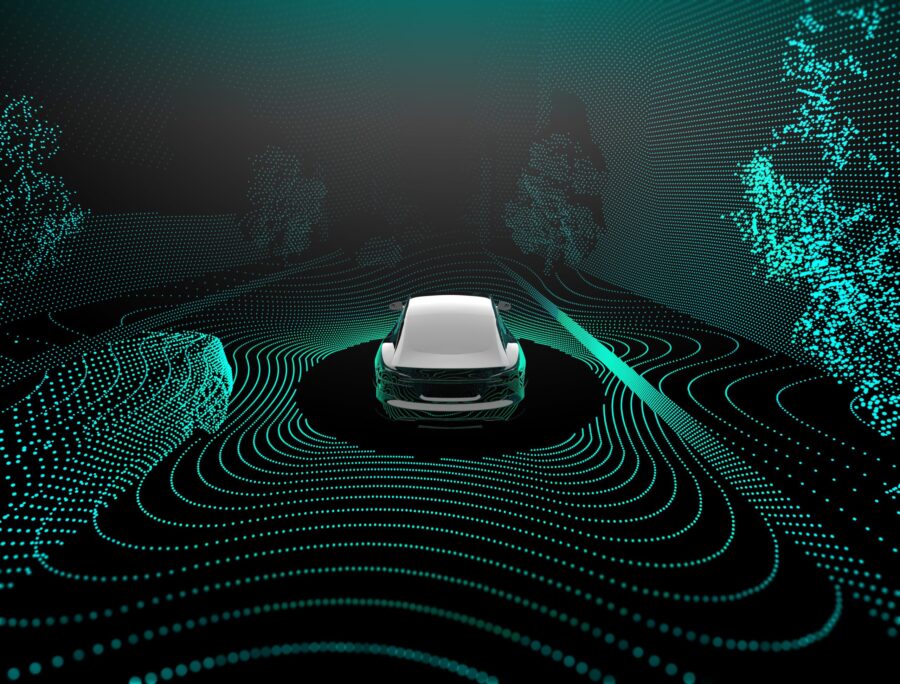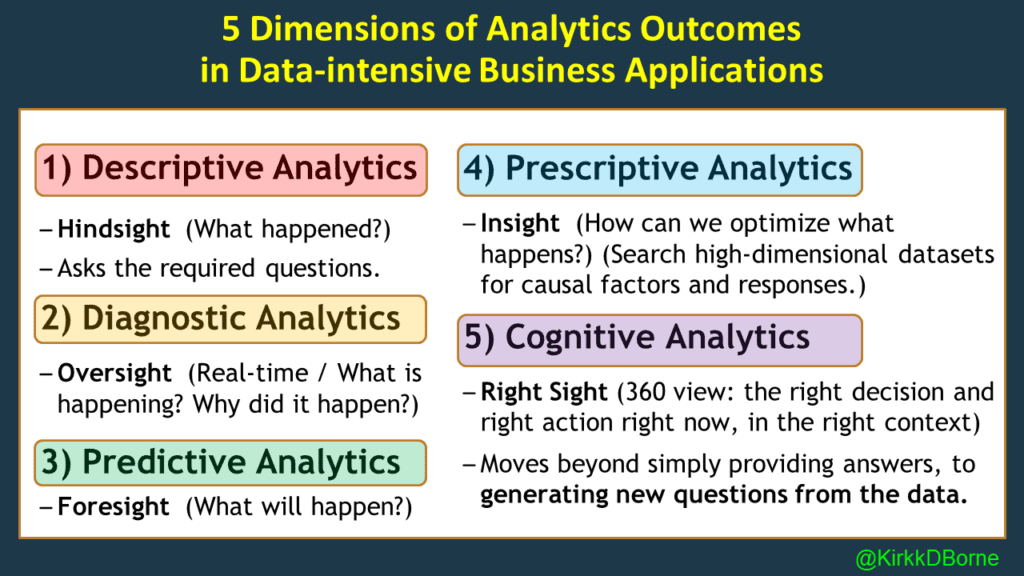
In a recent article on Autonomous Intelligent Systems (AIS) [1], Ajit Joakar described various features and characteristics of such systems, including associated technologies and research areas, building blocks and core elements, critical factors for success, and cross-cutting enablers. He introduces AIS as an “emerging interdisciplinary field that deals with situations where humans interact with AI systems that are autonomous.” From this, we see immediately the synergistic interaction between the intelligent system and its human users. While full autonomy suggests that the system can operate without human interaction, it is useful to leave open the opportunity (even the essential necessity) for human intervention, to provide mid-course corrections that keep the AIS on the right (and ethical) course.
Another detailed description of AIS comes from a 2014 report on Autonomous Manufacturing [2]. Though several years old, the report contains this informative list of definitions, features, and characteristics:
- Autonomous systems have the ability to learn, adapt, and act on decisions.
- Autonomous systems are those that can gain information about their environment, adapt and make decisions without the need for human intervention. Such systems can lead to decisions being made that reduce waste and risk while increasing productivity and repeatability.
- Autonomous can refer to the control of a particular task or process, or an entire system.
- Autonomous systems have the capacity to replace, augment or complement human activity. They have the potential to work collaboratively with humans, machines, or other autonomous systems and significantly advance both physical and intelligent capabilities.
- An autonomous system includes the hardware, software, sensors, and communication technology that support the reasoning, planning, and decision making required to achieve strategic self-directed goals.
- Features of an autonomous system include collaborative, learning, decision-making, sensing, and sensor integration (i.e., data fusion).
Within these contexts, we broaden the discussion to the Self-Driving Enterprise (SDE). An example of a self-sufficient SDE is an autonomous (self-driving) vehicle, which contains the sensors, computational capability, actionable components, and internal logic to operate autonomously and “intelligently”.
The five defining characteristics of an SDE (including self-driving cars) are:
- Sensing, Streaming — receiving signals (inputs) from numerous sensors, with data continuously flowing from those sensors.
- Responsive — takes action in response to the input signals.
- Learning, Agile — builds knowledge (because it is a Stateful system) from past, present, and observed actions (the latter may come from other systems in the embedded environment) in order to see what’s coming and to take appropriate action in a timely manner (i.e., in online real-time mode, not in off-line batch mode).
- Contextual, Optimizing — takes into account additional (external) data sources about the context of its actions in order to build insights about optimal decision-making. Ubiquitous sensors in the Internet of Things (IoT) can provide a rich source of contextual information and insights.
- Deciding, Acting — uses all inputs (the 360 view of the situation) to build an understanding of the environment in order to make a decision and take an action, with minimal risk and optimal outcomes (consistent with embedded business rules and appropriate decision logic).
Each of these five characteristics is associated with one of the five different dimensions of analytics applications in an SDE:
- Sensing, Streaming — Descriptive Analytics: observes, records, and keeps track of what events have been happening (i.e., hindsight).
- Responsive — Diagnostic Analytics: takes action based upon events that are currently happening in real-time (i.e., oversight).
- Learning, Agile — Predictive Analytics: goes beyond simple “reporting” of past events or reacting to present events, to predicting what is likely to occur next, based upon those past and current events — including training data (i.e., foresight).
- Contextual, Optimizing — Prescriptive Analytics: goes beyond predictive models, to knowing how objects behave under various conditions, in order to understand objectively under what conditions will a given object in the embedded environment act (or react) in a certain way, and then seeking to set up those conditions and/or behaviors that will yield optimal outcomes (i.e., insight).
- Deciding, Acting — Cognitive Analytics: sense-making from all of the input data, knowledge, insights, and understanding, in order to decide on the NBA (Next-Best Action), and then taking the right action, at the right time, at the right place, in the right context. This may also include probing new, but safe, “what if” scenarios to explore whether there is a better NBA (i.e., right sight).

As our SDE (vehicle, business, city, drone, supply chain, manufacturing process, or deep space exploration probe) moves through its operational processes, it applies machine learning algorithms of these two types:
- Supervised learning — search for, identify, classify, and respond to events, objects, or actions with known attributes and properties.
- Unsupervised learning — discover new categories of items (events, objects, or actions) in the environment; discover anomalous items; discover unusual associations of items and/or properties of items; discover emerging trends, patterns, or new directions (new leads) to evaluate and/or to follow.
These learning algorithms can be applied prudently within any of the five dimensions of analytics applications: descriptive, diagnostic, predictive, prescriptive, or cognitive.
So, given this algorithmic framework, we are now ready to introduce five rules of safe driving in AIS (within a SDE). These rules are derived intentionally and explicitly from a tested and validated set of safe driving rules that are taught to student drivers and to professional drivers in driving schools: they are the five rules in the Smith System of Safe Driving [3]. I learned these rules in my high school driving class a long time ago, and I still remember applying them when I drive now, these many years later.
Each of the five rules in the Smith System of Safe Driving has parallel applications in AIS and SDE, and has characteristics that map (more or less) to some of the five dimensions of analytics applications. Putting it all together, here are the 5 principles of safe driving in autonomous intelligent systems:
- “Aim high in steering” = View the path ahead as a whole, from a longer perspective, and not just a few steps ahead. Look to where you want to go, not only to where you are or have been (the Gretzky Principle: “Skate to where the puck is going to be, not to where it has been”) = Diagnostic, Predictive, Cognitive.
- “Get the big picture” = Stay aware of your surroundings (context) at all times. Note how others are behaving. Recognize that new situations will present new opportunities. Be contextual (the Yogi Berra Principle: “You can see a lot just by looking”) = Descriptive, Prescriptive, Cognitive
- “Keep your eyes moving” = Keep alert to the evolving conditions ahead. Dispose of eye-holding distractions quickly (i.e., interesting but unimportant items that present themselves in the environment) = Diagnostic (which contributes to Event Alert generation, based on business rules and machine learning algorithms).
- “Leave yourself an out” = Anticipate what choices others will make. Be ready for the unexpected. Leave space for a new, quick, safe decision. Optimize your reaction to events = Prescriptive.
- “Make sure they see you” = Reduce risk by removing assumptions about others’ expected behaviors. Connect, communicate, collaborate, share, trust, and show empathy with others. Make your NBA the right action = Prescriptive, Cognitive.
So, that’s it: our five principles for safe driving in autonomous intelligent systems! Autonomous systems are becoming more common, and maybe even the norm in some operational environments (not to mention our future cities and roadways). Consequently, some common sense, smart analytics, risk-mitigating behaviors, and rules for safe driving can go a long way to make these systems adaptive, efficient, effective, safe, secure, and productive for all, including your enterprise.
This article is adapted from and includes major excerpts from my article “Safe Driving in the Self-Driving Enterprise” [4].
References:
[1] Autonomous Intelligent Systems: https://www.datasciencecentral.com/autonomous-intelligent-systems/
[2] Report on Autonomous Manufacturing (2014): https://web.archive.org/web/20190806002852/https://epsrc.ukri.org/newsevents/pubs/autonomous-manufacturing-workshop-report/
[3] Smith System of Safe Driving: https://ritzel.siu.edu/courses/302s/SIPDE/SmithSystem.pdf
[4] Safe Driving in the Self-Driving Enterprise: https://medium.com/@kirk.borne/safe-driving-in-the-self-driving-enterprise-656fd3bbf378
